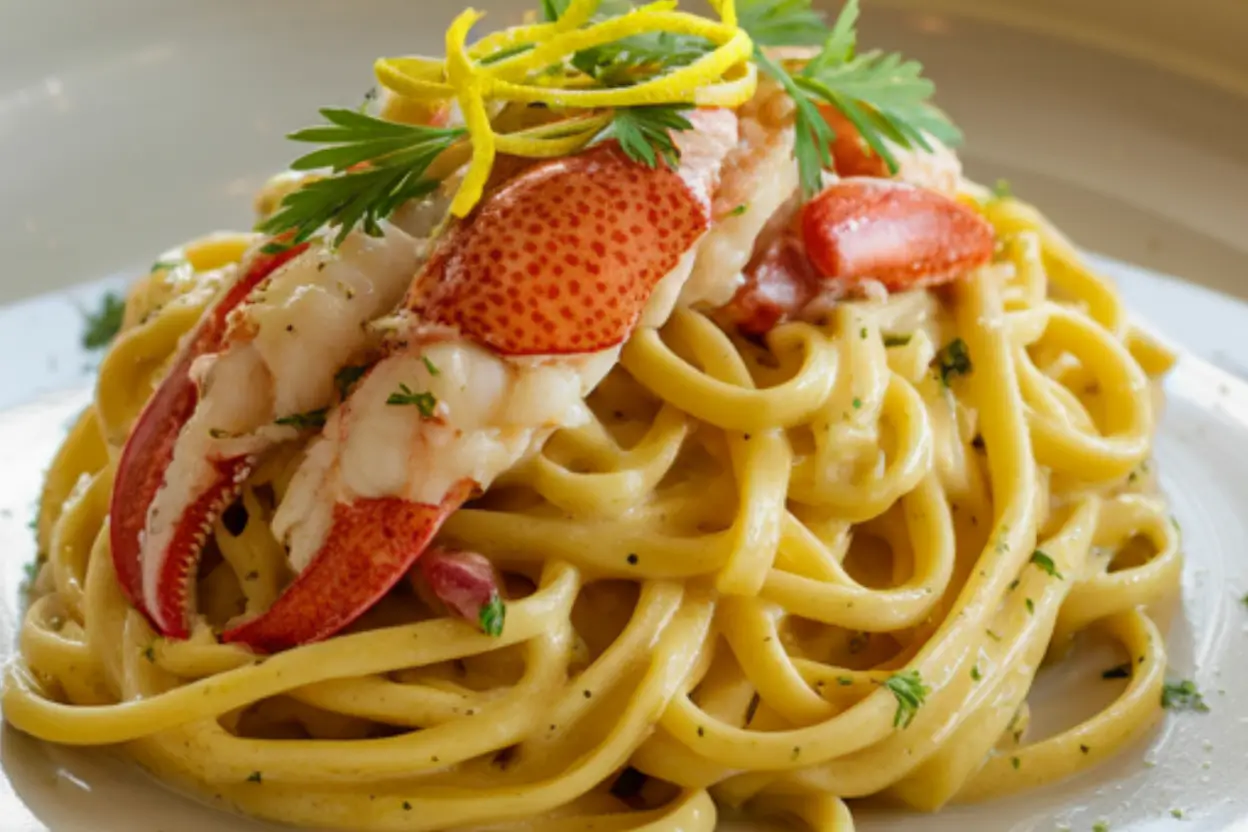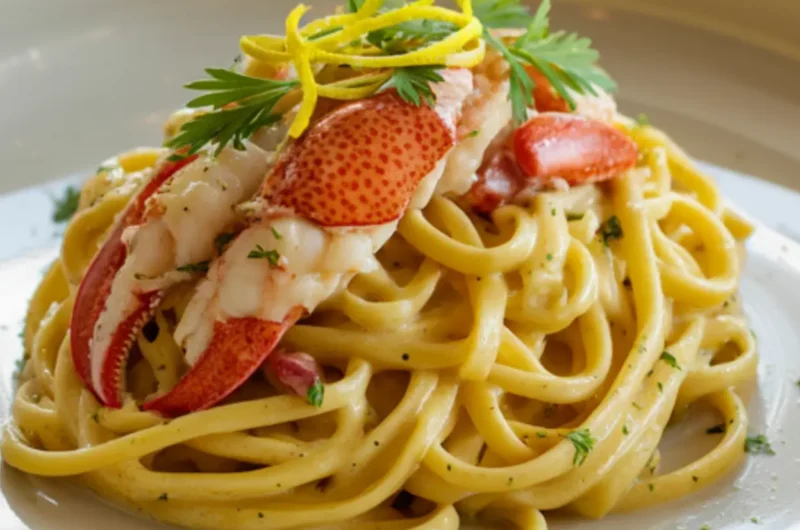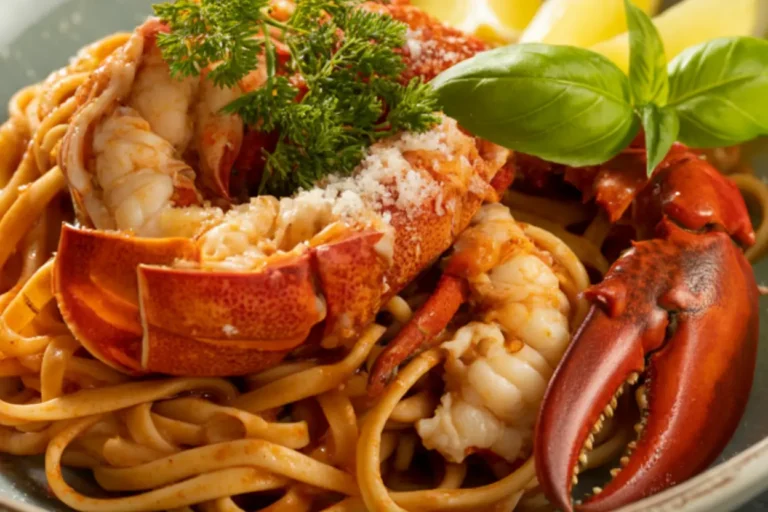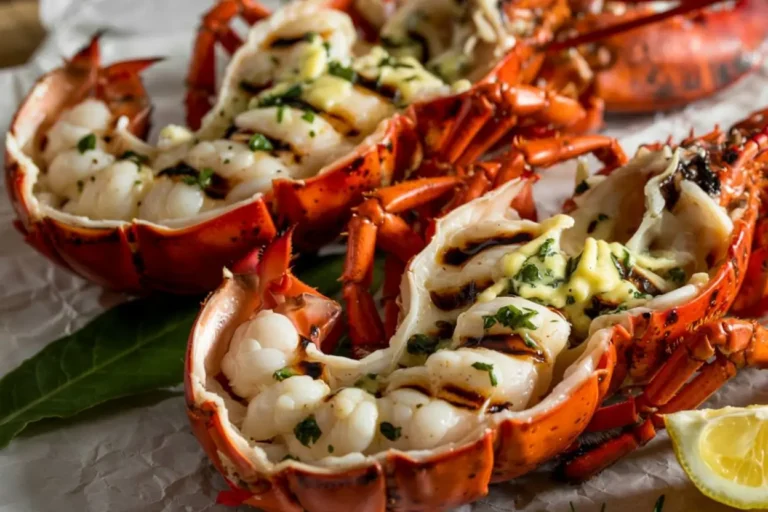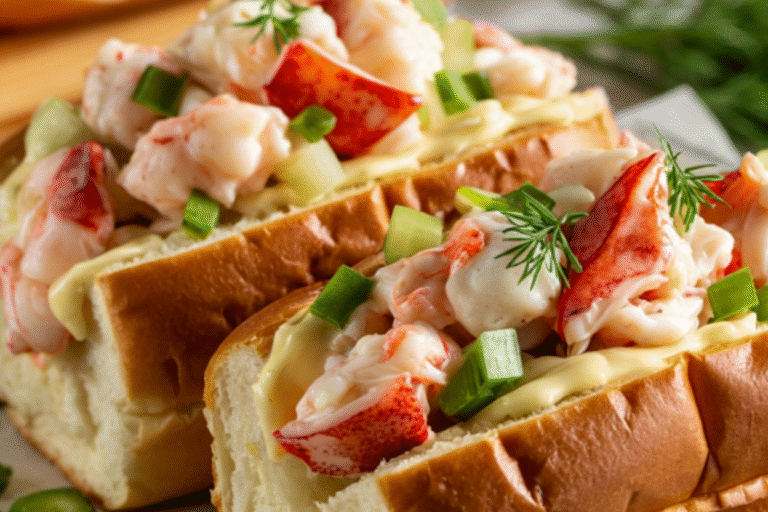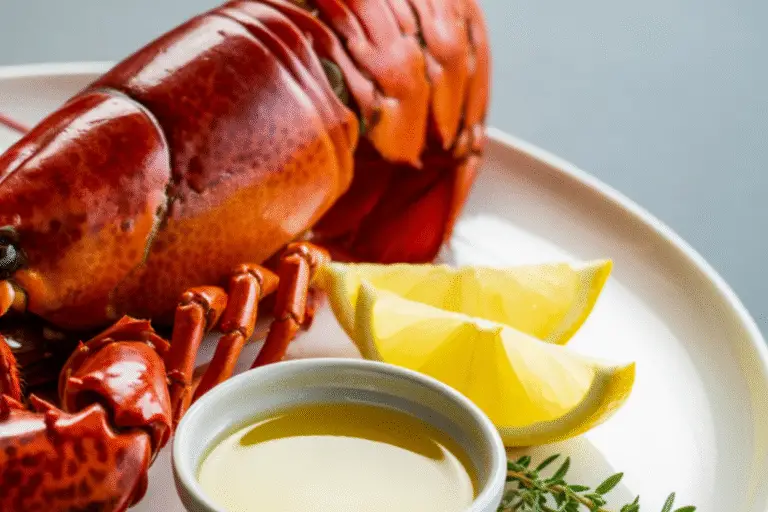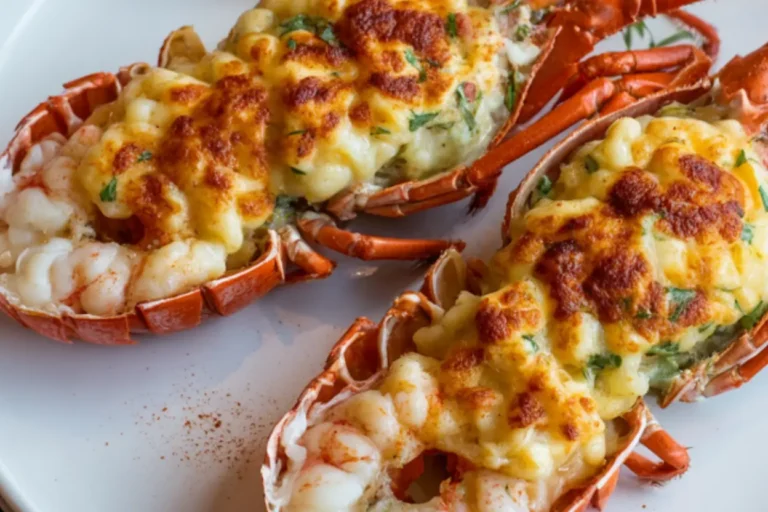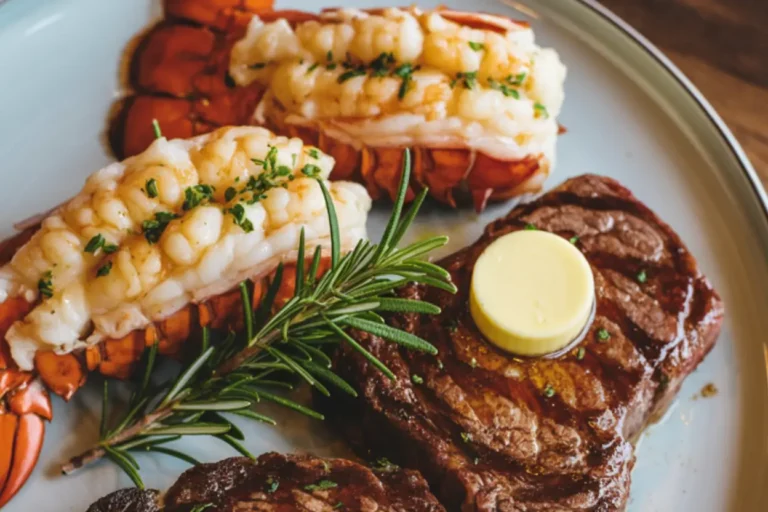Lobster Pasta Recipe: How to Make It in Under 35 Minutes
Table of Contents
Lobster pasta is one of those impressive dishes that seems like it should be reserved for special occasions or restaurant dining, but I’m here to let you in on a secret: you can create a restaurant-quality lobster pasta at home in less than 30 minutes. This elegant yet simple dish combines tender lobster meat with perfectly cooked pasta in a luscious sauce that will make your taste buds sing. Whether you’re planning a romantic dinner, entertaining guests, or simply treating yourself to something special on a weeknight, this lobster pasta recipe delivers maximum flavor with minimum fuss.
Thank you for reading this post, don't forget to subscribe!How to Make Lobster Pasta:
Quick Overview
This lobster pasta recipe transforms luxurious lobster into an accessible weeknight meal without sacrificing any of the indulgence that makes lobster so special. The dish includes tender pieces of lobster meat mixed with al dente pasta, coated in a smooth sauce that beautifully enhances the seafood’s natural sweetness. What makes this recipe particularly appealing is how quickly it comes together – in under 30 minutes – while still delivering a dish that tastes like it took hours to prepare.
The secret to this quick yet sophisticated dish lies in the simplicity of the ingredients and the cooking technique. We’ll create a sauce that enhances rather than masks the natural sweetness of the lobster, resulting in a harmonious dish where every element shines. By following a few key steps and timing things properly, you’ll have a restaurant-worthy meal on the table in less time than it takes to get takeout.
Total preparation and cooking time for this dish is approximately 25-30 minutes, making it perfect for those evenings when you want something special without spending hours in the kitchen. The bulk of the time is spent preparing the lobster meat, which can even be done in advance if you’re really pressed for time.
The Ingredients I Use to Bring My Lobster Pasta to Life
For this delicious lobster pasta recipe, you’ll need:
For the pasta and lobster:
- 8 oz (about 225g) linguine or spaghetti (fettuccine or tagliatelle work well too)
- 2 lobster tails (about 6-8 oz each), or 8-12 oz cooked lobster meat
- 2 tablespoons olive oil
- 2 tablespoons unsalted butter
- 3 cloves garlic, minced
- 1 small shallot, finely diced
- ¼ teaspoon red pepper flakes (adjust according to heat preference)
- ½ cup of dry white wine, like Sauvignon Blanc or Pinot Grigio
- ¾ cup heavy cream
- ½ cup freshly grated Parmesan cheese, plus more for serving
- 2 tablespoons fresh lemon juice
- Zest of one lemon
- 3 tablespoons fresh parsley, chopped
- 1 tablespoon fresh tarragon, chopped (optional but recommended)
- Salt and freshly ground black pepper to taste
Step-by-Step Instructions
1. Prepare the Lobster Tails
If you’re starting with raw lobster tails, you’ll need to cook them first. The quickest method is to boil them. So heat a large pot of salted water until it reaches a rolling boil. Then add the lobster tails and cook for about 4-5 minutes until the shells turn bright red and the meat is just cooked through (it should be opaque but still tender).
Remove the tails with tongs and place them in a bowl of ice water to stop the cooking process. Once cool enough to handle, use kitchen shears to cut through the underside of the shell lengthwise. Carefully pull out the lobster meat in one piece if possible. Slice the meat into bite-sized chunks, about 1-inch pieces. Set aside.
If you’re using pre-cooked lobster meat, simply cut it into bite-sized pieces and proceed to the next step.
2. Cook the Pasta
Bring a large pot of heavily salted water to a boil. The water should taste like seawater – this is key to properly seasoned pasta. Add the pasta and cook until al dente according to the package instructions, usually 8-10 minutes.
Before draining, reserve about 1 cup of the pasta cooking water – this starchy water is liquid gold for creating a silky sauce that clings to the pasta. Drain the pasta but don’t rinse it, as the starch on the surface helps the sauce adhere better.
3. Start the Sauce While the Pasta Cooks
As the pasta cooks, start making the sauce. In a large skillet or sauté pan, heat the olive oil and butter over medium heat until the butter melts and starts to gently foam.
Add the minced garlic, diced shallot, and red pepper flakes. Sauté for 2-3 minutes until the shallots are translucent and everything is fragrant but not browned. Garlic can burn quickly and become bitter, so keep a close eye on it.
4. Build the Flavor Base
Pour in the white wine and increase the heat to medium-high. Allow the wine to simmer and reduce by about half, which should take approximately 2-3 minutes. This step not only concentrates the flavors but also cooks off the alcohol, leaving behind just the wine’s aromatic essence.
Once reduced, lower the heat to medium and add the heavy cream. Allow the mixture to simmer gently for 2-3 minutes until it begins to thicken slightly. The cream should reduce just enough to coat the back of a spoon.
5. Combine Everything
Stir the cooked lobster meat into the sauce, folding it in gently to combine. Cook for just 1-2 minutes to warm the lobster through. If you’re using freshly cooked lobster, be careful not to overcook it at this stage, as it can quickly become tough and rubbery.
Transfer the drained pasta to the skillet with the sauce. Using tongs, gently toss to coat the pasta evenly. If the sauce is too thick, add a splash of reserved pasta water to thin it out—the starch will help the sauce adhere smoothly to the pasta.
6. Finish the Dish
Remove the skillet from the heat and immediately add the grated Parmesan cheese, lemon juice, and lemon zest. Mix everything together until the cheese has fully melted and blended into the sauce. The warmth from the pasta and sauce will melt the cheese gently, preserving the tender texture of the lobster.
Sprinkle in most of the chopped parsley and tarragon (if using), reserving some for garnish. Season with salt and freshly ground black pepper to taste, remembering that the Parmesan cheese already adds some saltiness.
7. Serve Immediately
Transfer the lobster pasta to warmed serving plates or pasta bowls. Garnish with the remaining herbs, an extra sprinkle of Parmesan cheese, and a twist of black pepper. For an extra touch of elegance, add a small lemon wedge to each plate.
Serve immediately while the pasta is still hot and the sauce is at its creamiest. This dish waits for no one – it’s at its absolute best straight from the pan to the plate!
What to Serve Lobster Pasta With
Lobster pasta is a star on its own, but pairing it with complementary sides and beverages can elevate the entire dining experience:
Simple Green Salad: A light, crisp salad with a bright vinaigrette provides a refreshing contrast to the rich pasta. Try arugula with a lemon vinaigrette or a simple mix of butter lettuce, thinly sliced fennel, and a light Dijon dressing.
Crusty Bread: A slice of good-quality crusty bread, like a French baguette or sourdough, is perfect for soaking up any remaining sauce on your plate. Lightly toast and rub with a cut garlic clove for extra flavor.
Roasted Asparagus or Broccolini: These green vegetables add color and a welcome bitter note that cuts through the richness of the pasta. Simply toss with olive oil, salt, and pepper, then roast at 425°F (220°C) until tender and slightly charred.
Wine Pairing: A crisp, unoaked white wine like a Sancerre, Chablis, or Pinot Grigio complements the sweetness of the lobster without overwhelming it. For those who prefer red, a very light Pinot Noir can work nicely too.
Sparkling Water with Lemon: The effervescence and citrus notes help cleanse the palate between bites of the rich pasta.
Dessert Suggestion: End the meal with something light and citrusy, like lemon sorbet or a berry panna cotta, which provides a refreshing conclusion without being too heavy after the rich main course.

Top Tips for Perfecting Lobster Pasta
After preparing this dish many times, I’ve gathered some valuable insights that can help you achieve the best results:
Lobster Selection and Preparation: If possible, use fresh lobster tails. However, frozen ones work well too – just thaw them overnight in the refrigerator. You can also ask your fishmonger to steam lobsters for you, which makes meat extraction much easier. If using pre-cooked lobster meat, add it to the sauce at the very end to just warm it through.
Pasta Choice: Long, thin pasta varieties like linguine or spaghetti are traditional choices that allow the sauce to coat each strand evenly. For something different, try fresh pasta, which cooks even faster and has a more delicate texture that complements the lobster beautifully.
Timing Is Everything: This dish comes together quickly, so have all your ingredients prepped and ready before you begin cooking (this is called mise en place). The most common mistake is overcooking the lobster, which makes it tough and rubbery. Remember that it will continue cooking slightly when added to the hot sauce.
Wine Substitution: If you prefer not to use wine, you can substitute with seafood stock or clam juice mixed with a splash of fresh lemon juice to add acidity.
Dairy-Free Option: For a dairy-free version, replace the heavy cream with full-fat coconut milk and omit the Parmesan. The flavor will be different but still delicious, with a slight tropical note that works surprisingly well with seafood.
Flavor Enhancers: For extra depth of flavor, consider adding a tablespoon of tomato paste when sautéing the garlic and shallots, or incorporate a pinch of saffron when you add the cream.
Stretch Your Lobster: Lobster is expensive, so if you’re looking to make the dish more economical, use half the amount of lobster and add some large, wild-caught shrimp to supplement the seafood component.
Storing and Reheating Tips
While lobster pasta is best enjoyed immediately after cooking, sometimes leftovers are unavoidable. Here’s how to handle them:
Short-Term Storage: If you have leftovers, allow the pasta to cool to room temperature (but no longer than 2 hours), then transfer it to an airtight container and refrigerate. Properly stored, lobster pasta will keep in the refrigerator for 1-2 days. Keep in mind that the lobster’s texture may change slightly upon refrigeration.
Freezing Not Recommended: I don’t recommend freezing this dish as both the pasta and the lobster will change in texture, and the cream sauce may separate when thawed and reheated.
Gentle Reheating: To reheat, place the pasta in a skillet or saucepan over low heat. Add a splash of cream, milk, or even a little water to loosen the sauce, which will have thickened in the refrigerator. Cover the pan and warm gently, stirring occasionally, until the pasta is heated through. Avoid using high heat or microwaving, as this can make the lobster tough and cause the sauce to separate.
Refresh Before Serving: After reheating, a squeeze of fresh lemon juice and a sprinkle of fresh herbs can help revitalize the flavors. You might also want to add a touch more freshly grated Parmesan.
Repurposing Leftovers: If you’re concerned about the quality of reheated pasta, consider transforming leftovers into a new dish. Chop the lobster and pasta into smaller pieces and use them to fill savory crepes, or add a bit of seafood stock to create a luxurious pasta soup.
This lobster pasta recipe proves that you don’t need hours in the kitchen to create a memorable, restaurant-quality meal. By using quality ingredients and following these simple techniques, you can prepare an impressive dish that’s perfect for both special occasions and elevated weeknight dinners. The combination of sweet lobster, al dente pasta, and silky sauce creates a harmonious dish that feels indulgent yet comes together in under 30 minutes – truly the best of both worlds!
click here to follow me on pinterest
Lobster Pasta Recipe: How to Make It in Under 35 Minutes
Cuisine: Italian-AmericanDifficulty: Medium2
servings15
minutes20
minutes750-850
kcalLobster Pasta is a rich and elegant seafood dish combining tender lobster meat with a silky, lemon-kissed cream sauce, tossed with al dente pasta and finished with Parmesan, fresh herbs, and a touch of white wine. It’s a luxurious yet approachable meal perfect for date nights, special occasions, or whenever you’re craving something indulgent.
Ingredients
8 oz (about 225g) linguine or spaghetti (fettuccine or tagliatelle work well too)
2 lobster tails (about 6-8 oz each), or 8-12 oz cooked lobster meat
2 tablespoons olive oil
2 tablespoons unsalted butter
3 cloves garlic, minced
1 small shallot, finely diced
¼ teaspoon red pepper flakes (adjust according to heat preference)
½ cup of dry white wine, like Sauvignon Blanc or Pinot Grigio
¾ cup heavy cream
½ cup freshly grated Parmesan cheese, plus more for serving
2 tablespoons fresh lemon juice
Zest of one lemon
3 tablespoons fresh parsley, chopped
1 tablespoon fresh tarragon, chopped (optional but recommended)
Salt and freshly ground black pepper to taste
Instructions
- Cook the Lobster Tails
Boil raw lobster tails in salted water for 4–5 minutes until bright red and opaque. Transfer to an ice bath, then extract and chop the meat into bite-sized pieces. If using pre-cooked lobster, just cut and set aside. - Boil the Pasta
Cook linguine (or pasta of choice) in heavily salted water until al dente. Reserve 1 cup of the starchy pasta water before draining. Do not rinse the pasta. - Start the Sauce
In a large skillet, heat olive oil and butter over medium. Sauté garlic, shallot, and red pepper flakes for 2–3 minutes until fragrant and translucent, without browning. - Build the Base
Add white wine, increase heat, and let it reduce by half (2–3 min). Lower the heat, stir in heavy cream, and simmer for 2–3 minutes until lightly thickened. - Combine Lobster & Pasta
Gently fold in the lobster and cook for 1–2 minutes to warm it. Add the drained pasta and toss gently to coat. Use reserved pasta water as needed to loosen the sauce. - Finish with Flavor
Off the heat, stir in Parmesan, lemon juice, and zest. Add most of the parsley and tarragon. Season with salt and pepper to taste. - Plate & Serve
Divide into bowls, garnish with reserved herbs, extra Parmesan, and a lemon wedge. Serve immediately for the best creamy texture and flavor.
Notes
- This dish beautifully balances richness with brightness, thanks to the combination of heavy cream, lemon juice, and fresh herbs. Using high-quality lobster (either fresh or pre-cooked) makes a big difference in flavor. Tarragon is optional but adds a subtle, sweet anise flavor that pairs exceptionally well with seafood. Serve it with crusty bread and a glass of white wine to complete the experience.

